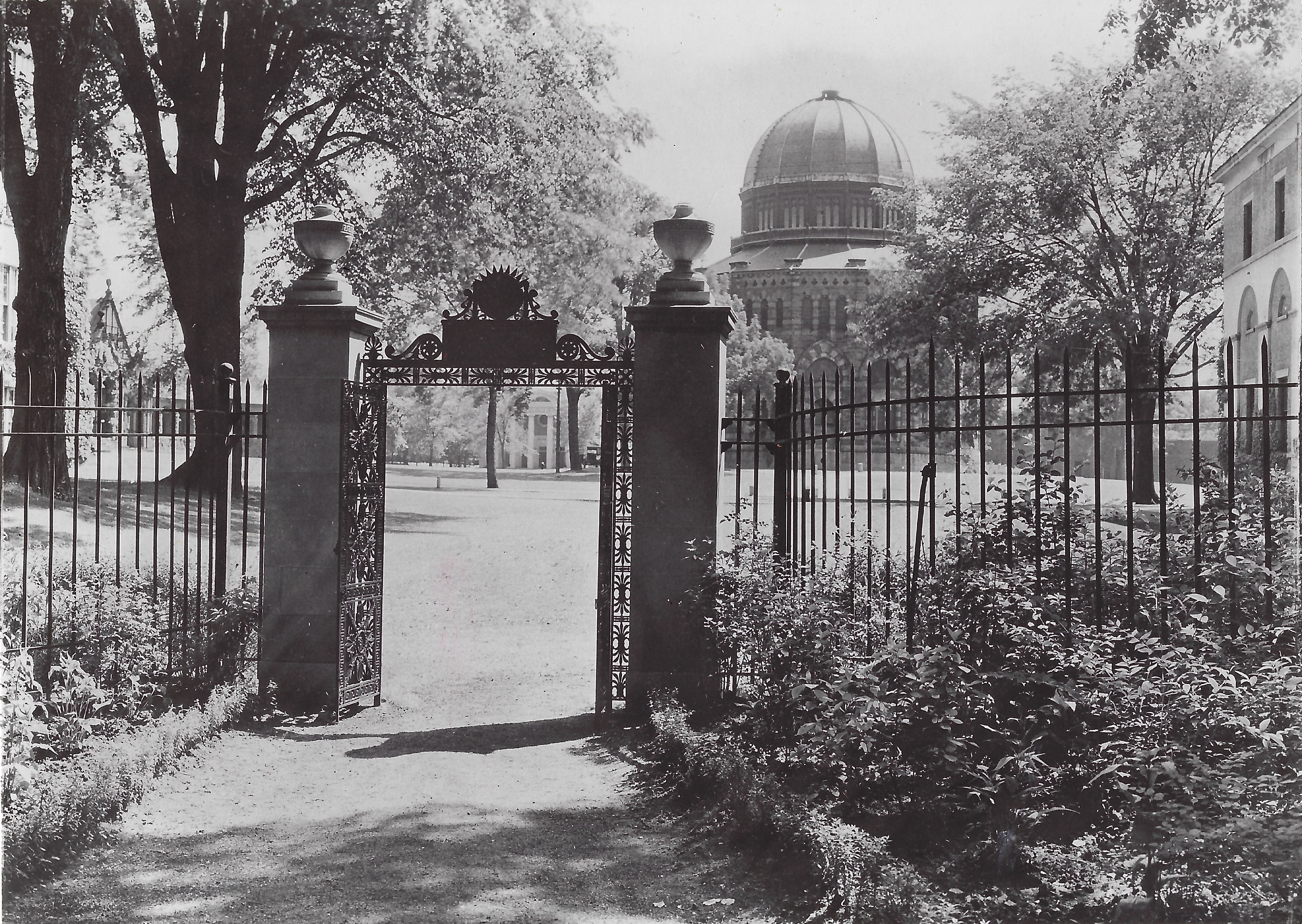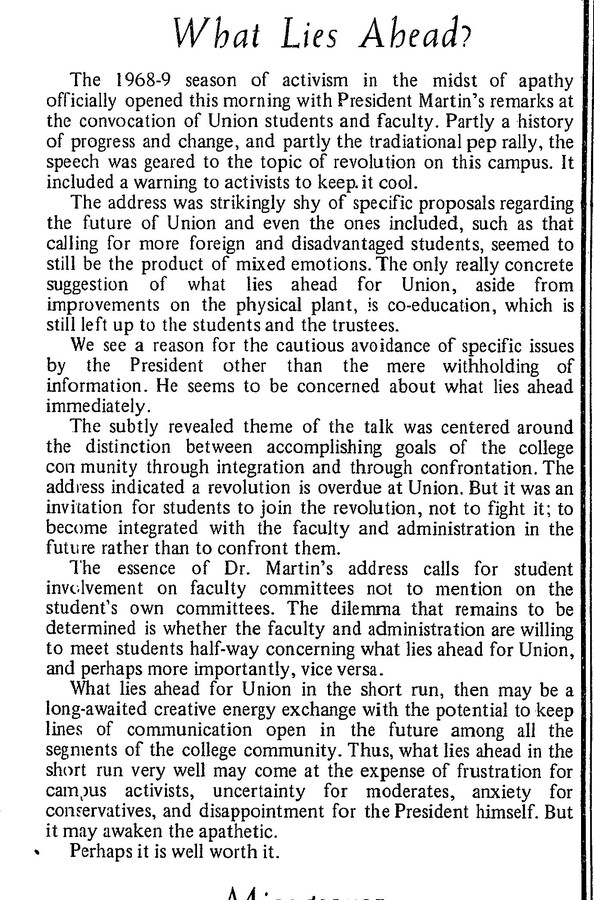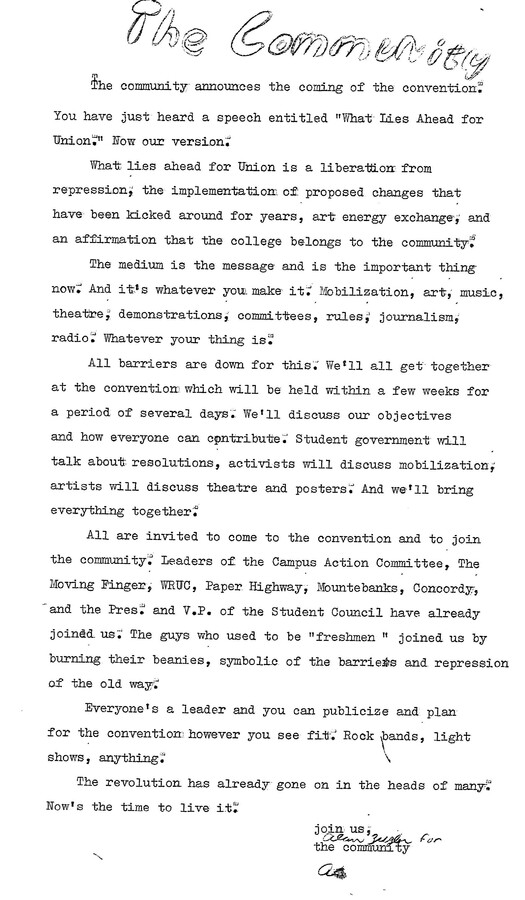The Coeducation Decision
The Question
The late 1960s brought a tumultuous time to college campuses across the United States. In 1967, the "July Committee" had recommended that Union become coeducational. Questionnaires and polls were distributed to all members of the Union College community to gauge the question as to whether the College should adopt coeducation, and students were generally in favor of it.

Student poll regarding coeducation from the Concordiensis, 1968. Original held in the Department of Special Collections, Schaffer Library.
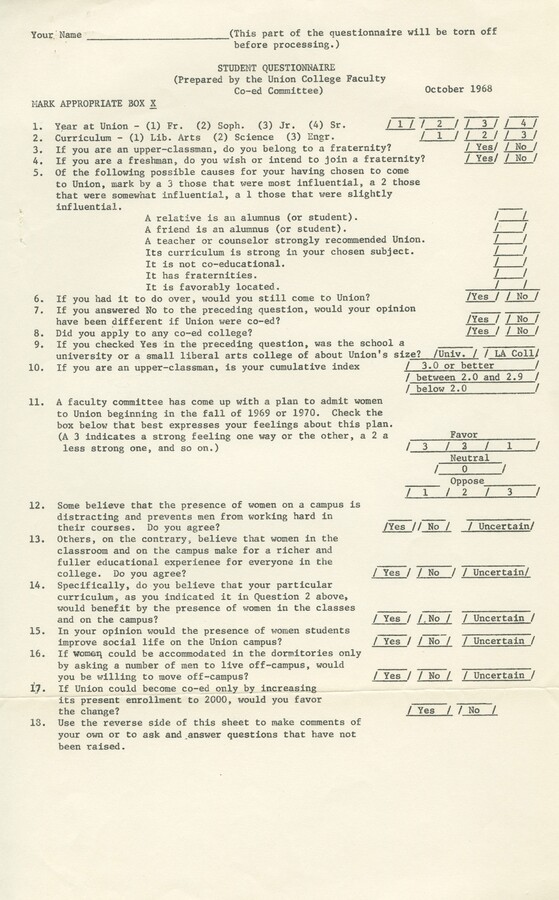
Questionnaire for students on coeducation, 1968. From the Vertical File, SCA-1025, held in the Department of Special Collections, Schaffer Library.
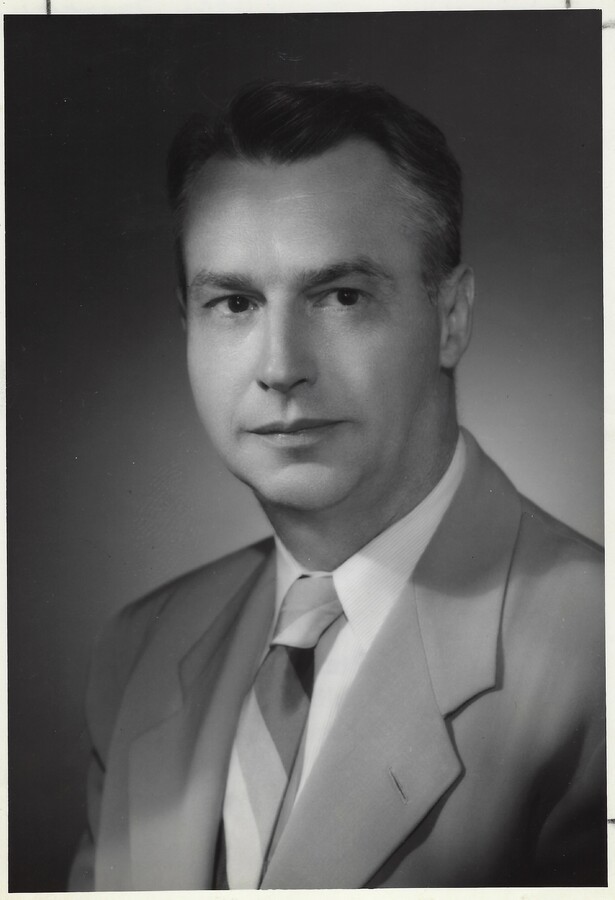
Carl Niemeyer, undated. From the Picture File, (SCA-1062). Courtesy of the Department of Special Collections, Schaffer Library.

Summary of Niemeyer report, 1968. From the Harold C. Martin Collection, (RG02-021). Courtesy of the Department of Special Collections, Schaffer Library.
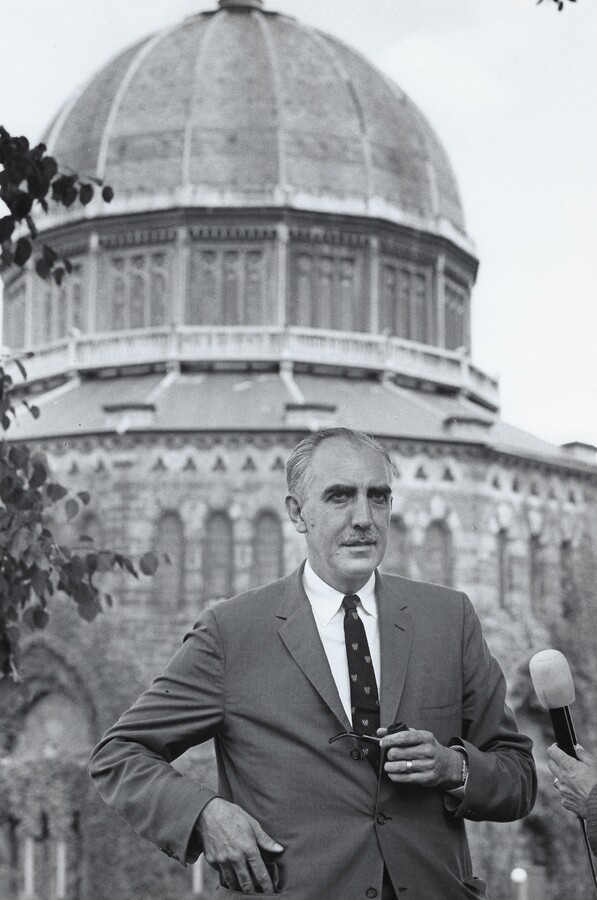
President Harold Martin, undated. From the Picture File (SCA-1062). Courtesy of the Department of Special Collections, Schaffer Library.
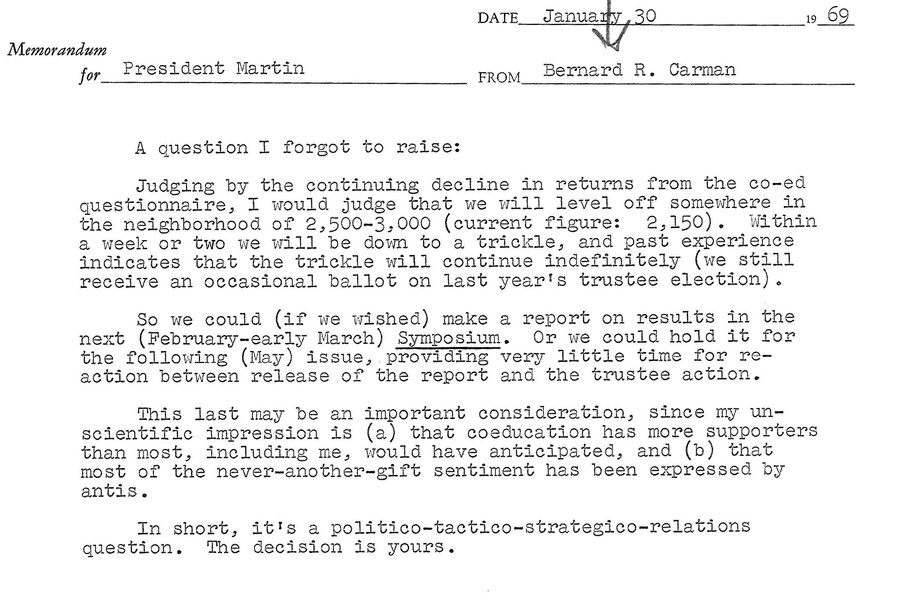
Memorandum regarding coeducation decision, 1968. From the Harold C. Martin Collection, (RG02-021). Courtesy of the Department of Special Collections, Schaffer Library.
The Committee
1968, President Harold Martin appointed an ad hoc committee to examine the idea of bringing coeducation to the College, which was chaired by Carl Niemeyer. After the committee recommended coeducation, the College's faculty voted overwhelmingly to allow women to join the student body on an official basis.25 Union College's peer institutions were moving towards coeducation, and the College made the decision to do so as well. In the fall of 1970, 126 women were admitted with the College's freshman class out of 450 total students.26 At the time, the decision was not entirely popular or well-received by all. One argument against coeducation was an assumption that it would be detrimental to the sciences.27 It was not long before this assumption was disproven, and today we understand that such assumptions were products of the time.
25 Somers, 795.
26 Ibid., 15.
27 Ibid., 797.

